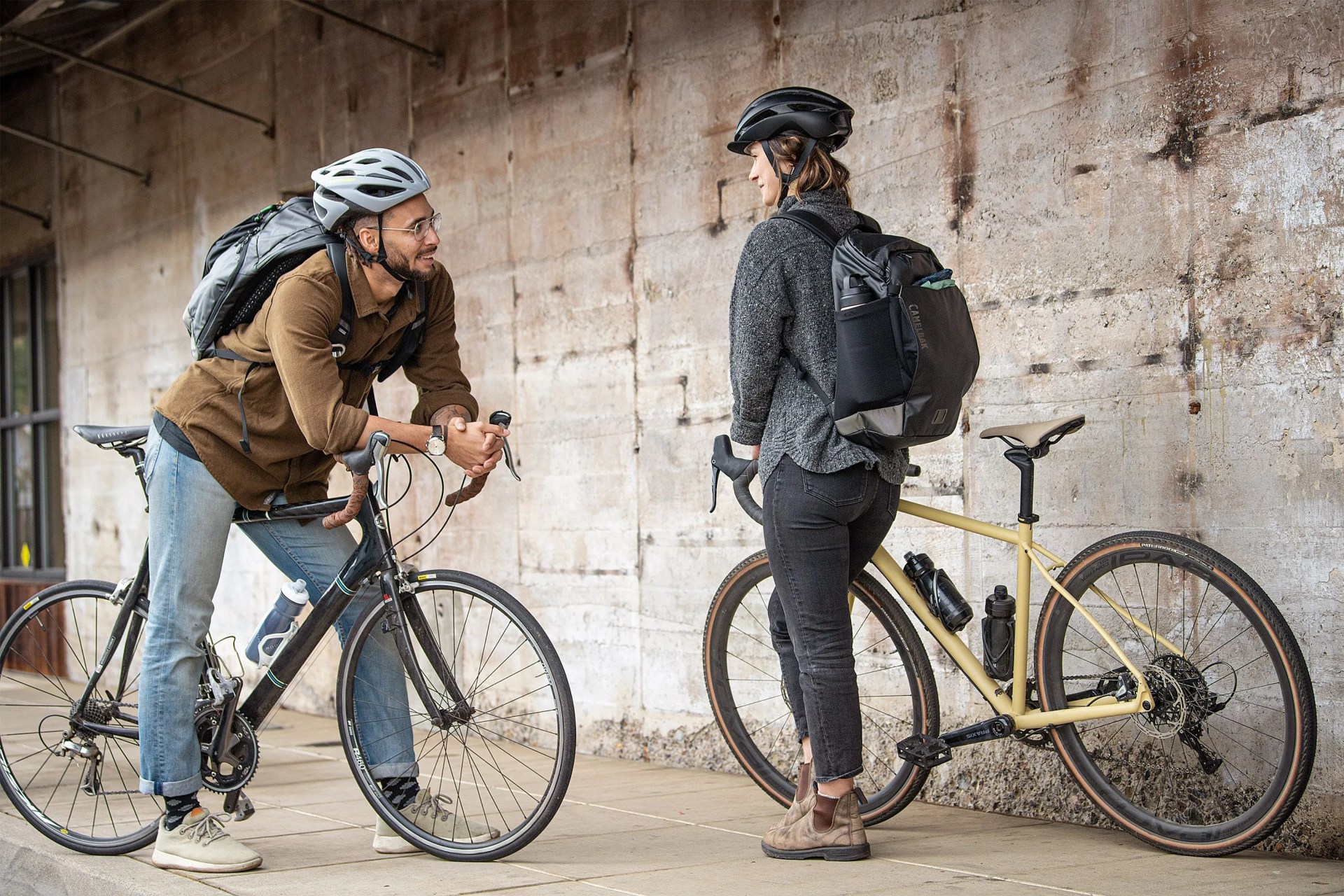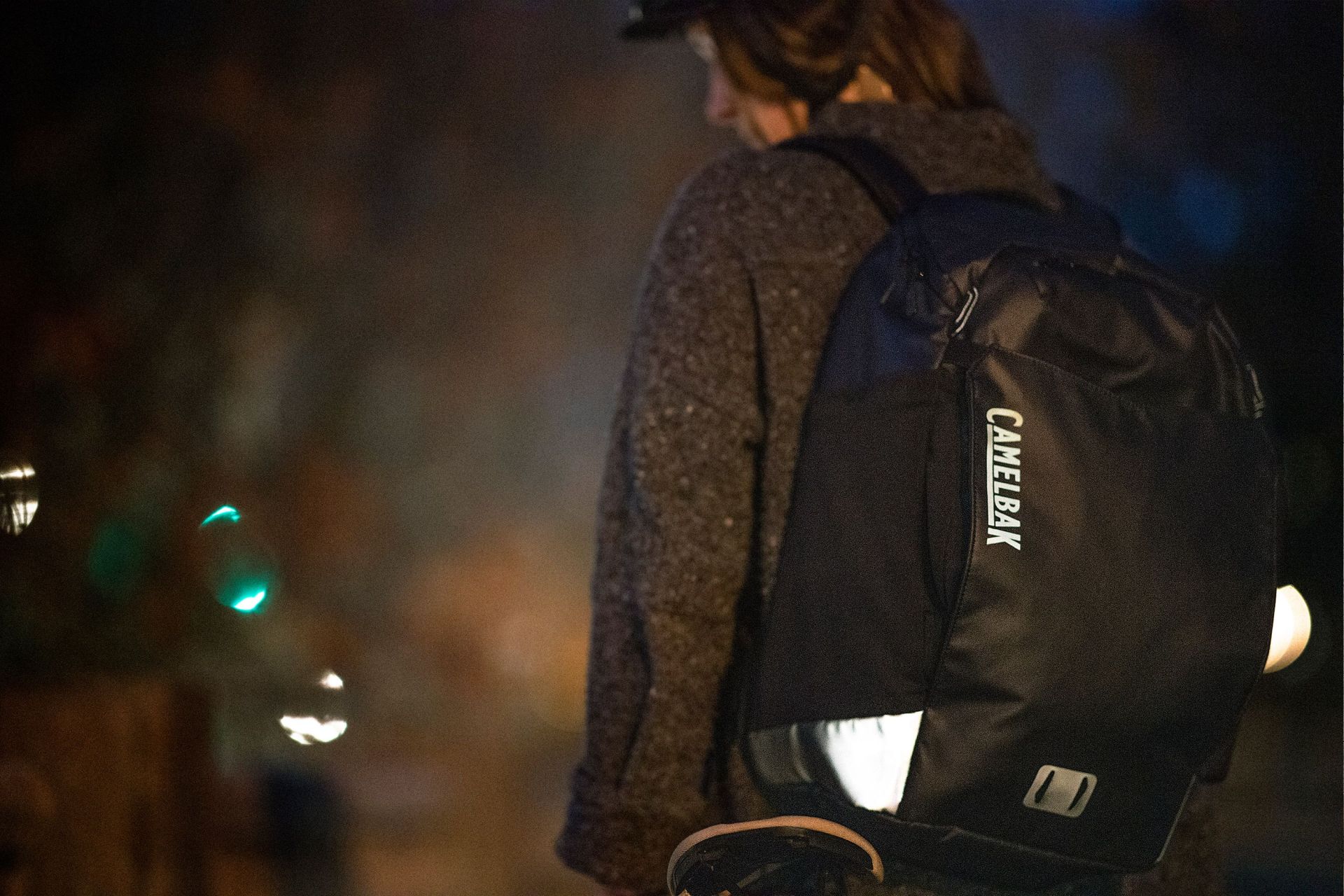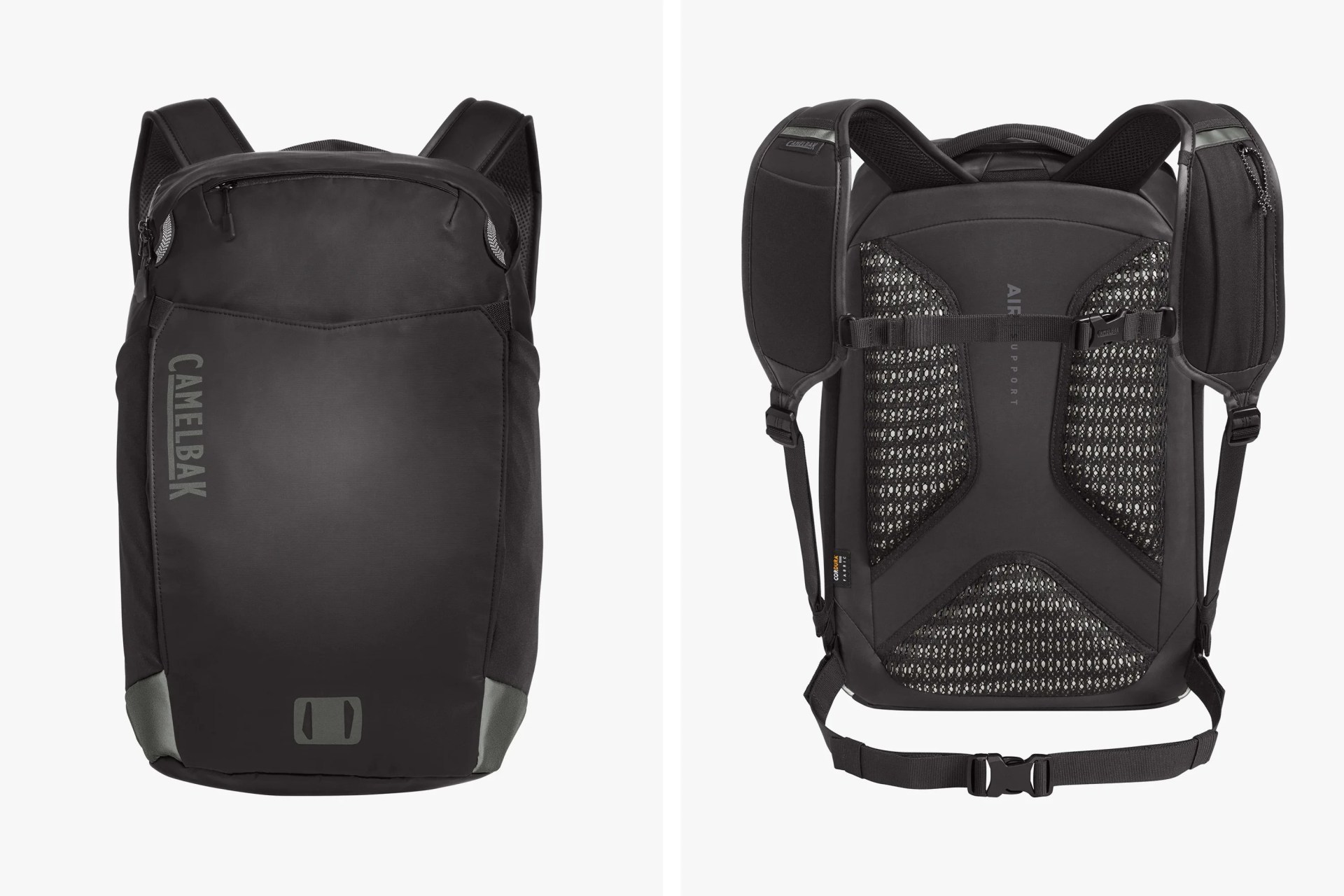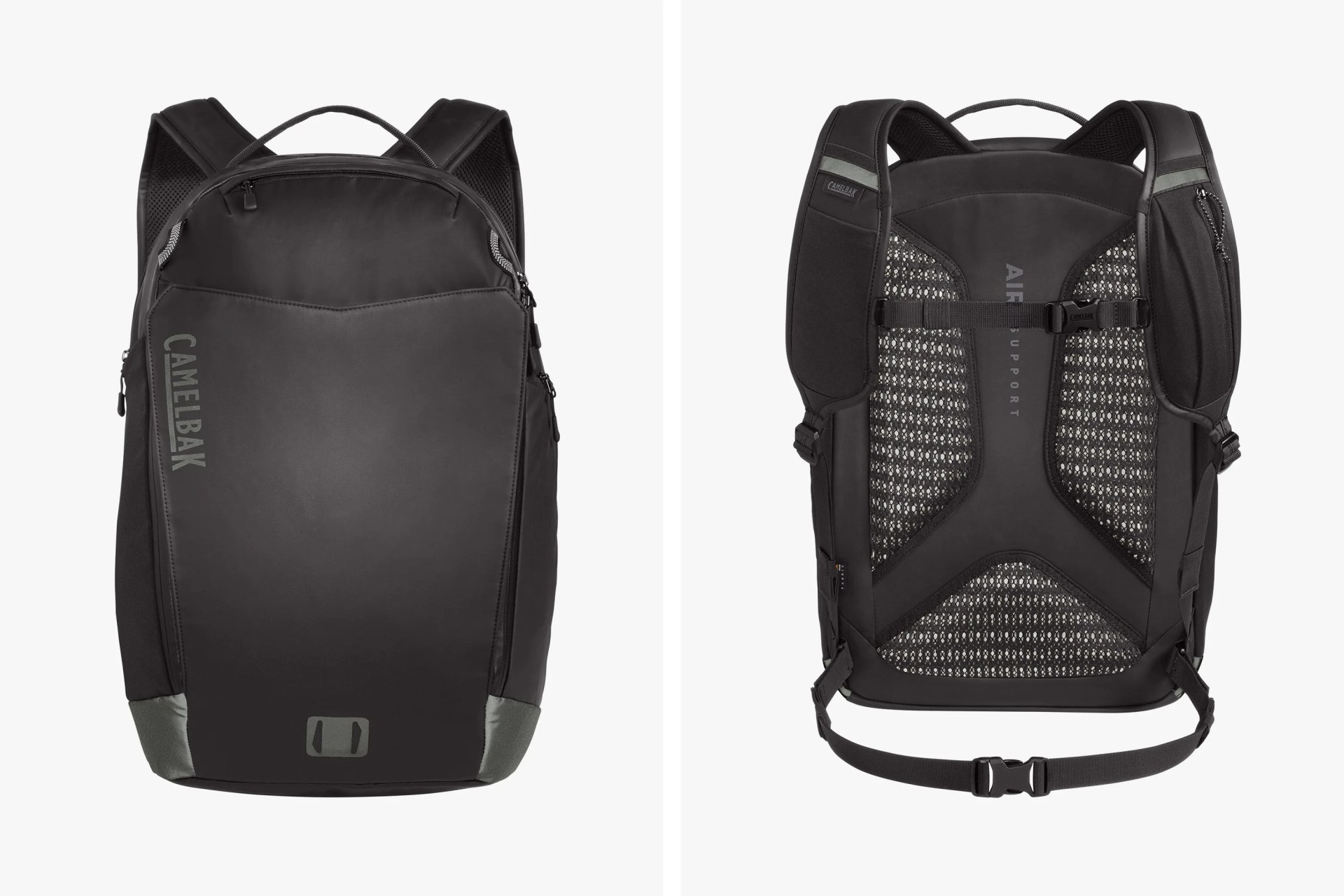If you’ve spent any time riding a bike trail, you’re most likely familiar with Camelbak’s paks. Their two most popular reservoir MTB bags, the H.A.W.G. and the M.U.L.E, are iconic bags that have proven to be durable and lightweight choices for the everyday rider.
Now, Camelbak has produced a new line of bags with all the dependability of these OG bags, but with a focus on the needs of commuter cyclists. We caught up with Mike Valvano, Director of Product at Camelbak, and Jeffrey Tomasi, Product Manager at Camelbak, to talk about the design process of these iconic packs.
 Camelbak
CamelbakQ: What were the inspirations for the new version, and how did you improve on such an iconic line?
Mike Valvano:“Camelbak is grounded in cycling, so for us it’s not just a lifestyle, it’s a way of life. We make products for mountain biking, gravel riding, and road cycling, but we had not made something for commuters. We identified gaps in micro-mobility, which is where we thought we could make a contribution. It’s not just about making more bags for people — we really looked at the question as, ‘How can we make a contribution to the cycling community?”
Jeffrey Tomasi: “We took things we know really well from the bike side and other areas of sport business and tried to make them unique to the commuting line. We spent a lot of time choosing the right weight and quality of the materials. We landed on 330D Cordura nylon because it’s more durable but lightweight. In the end, we wanted the pack to be durable, lightweight and weather-resistant.”
Q: What is the main difference between the H.A.W.G. and the M.U.L.E pack, and who do you recommend each for?
JT: “The main difference is the overall capacity. The M.U.L.E has twenty-two liters of capacity and the H.A.W.G has thirty liters. The H.A.W.G. has an extra compartment, a sleeve for tech.”
MV: “The H.A.W.G. is for super commuters. They might carry an extra pair of shoes, a change of clothes, or lunch. The design of the shoulder harness was inspired by the access you get from gravel riding or trail running vests. It’s a place to stash your air pods or your MetroCard where you can get to them easily and quickly without taking off the pack.”
 Camelbak
CamelbakQ: What features were created with safety in mind?
MV: “The majority of collisions happen at night and many accidents are a result of side impact. For that reason, we needed a big swatch of reflective material on the side for people to be seen. That reflective material is greater than 350 candela power — the same level used on gear for emergency response personnel.”
JT: “We have retroreflective details on 360 degrees of the pack, the harness straps, the back, the camelback logo, and the sides. Those are full reflective panels, for the utmost safety at night.”
M.U.LE – 22L
 Camelbak
CamelbakPrice: $115
H.A.W.G – 30L
 Camelbak
CamelbakPrice: $160

